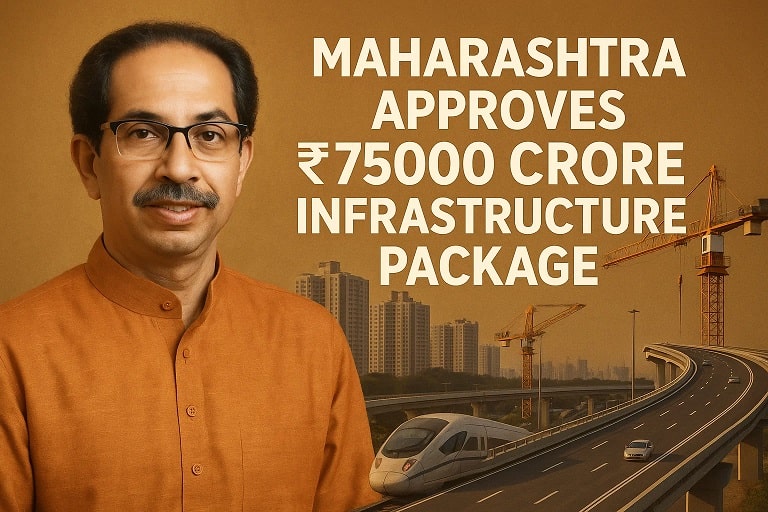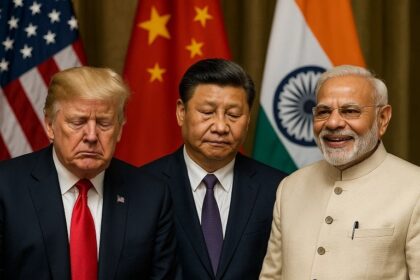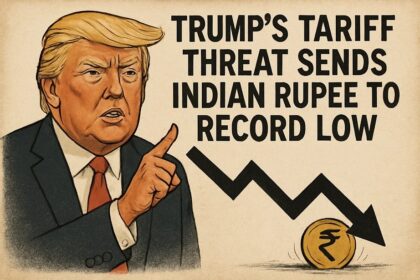Maharashtra Approves ₹75,000 Crore Infrastructure Package: Driving Economic and Social Progress
On September 4, 2025, Maharashtra’s Cabinet, under Chief Minister Devendra Fadnavis, approved a transformative ₹75,000 crore infrastructure package to enhance urban mobility, strengthen rural-urban connectivity, and uplift social welfare. The package funds projects like Metro Line 11 (Anik Depot–Wadala to Gateway of India), new rail corridors, and increased pensions under schemes like Sanjay Gandhi Niradhar Yojana. Aligned with India’s PM Gati Shakti initiative, this investment aims to cement Maharashtra’s position as India’s economic leader. This article explores the package’s drivers, historical context, future potential, and impacts, highlighting Tamil Nadu’s role in supplying technology and materials for this ambitious plan.
Why This Package Matters
Maharashtra, contributing 13.3% to India’s GDP, is pivotal to the nation’s $4 trillion economy goal by 2030. The package addresses urban congestion in Mumbai, boosts industrial corridors, and supports rural communities, with an estimated economic multiplier effect of 1.8x, potentially adding ₹1.35 lakh crore to the state’s economy. For Tamil Nadu, a hub for advanced manufacturing and tech innovation, the package opens avenues for its Chennai and Coimbatore industries to supply critical components like cement, electronics, and IoT solutions, fostering inter-state economic synergy.
Latest Developments Driving the Package
Approved on September 4, 2025, at Sahyadri Guest House, the package prioritizes transport and welfare to transform Maharashtra’s infrastructure landscape. Key components include:
- Metro Line 11 Expansion: A ₹23,487.51 crore project extending Metro Line 4 from Anik Depot–Wadala to the Gateway of India, led by Mumbai Metro Rail Corporation Limited (MMRCL), to decongest Mumbai’s roads and support tourism.
- Suburban Rail Network: ₹14,907 crore for 136 km of new corridors (Panvel–Vasai, Kasara–Asangaon, Badlapur–Karjat), enhancing connectivity for 50 lakh suburban commuters.
- Pune-Lonavala Connectivity: ₹5,100 crore for third and fourth rail lines to streamline industrial and commuter travel in Pune’s economic corridor.
- Mumbai Local Train Upgrade: ₹4,826 crore to introduce 238 air-conditioned trains under MUTP-3 and MUTP-3A, improving daily commutes for 70 lakh passengers.
- Welfare Boost: A ₹1,000 monthly pension increase for 4.5 lakh beneficiaries under Sanjay Gandhi Niradhar Yojana and 24,003 under Shravanbal Seva Rajya Pension Scheme, costing ₹450 crore annually, starting October 2025.
- Smart Infrastructure: Integration with PM Gati Shakti emphasizes digital monitoring and green technologies, with Tamil Nadu’s tech firms potentially supplying IoT sensors.
Tamil Nadu’s Context
Tamil Nadu’s advanced manufacturing ecosystem, including Chennai’s electronics sector and Coimbatore’s tech startups, positions it to supply ₹6,000 crore in materials and technology for Maharashtra’s projects. The state’s experience with smart city initiatives, like Chennai’s urban mobility projects, aligns with Maharashtra’s goals, enabling collaboration in IoT and sustainable infrastructure, especially in the context of IMC 2025’s tech focus.
Historical Context of Maharashtra’s Infrastructure Ambitions
Maharashtra’s infrastructure journey reflects its role as India’s industrial and financial hub, often balancing ambition with fiscal constraints:
- 2014-2015: Launched ₹10,000 crore for Mumbai’s coastal road and NH-6 upgrades, setting the stage for urban connectivity.
- 2019: ₹30,000 crore allocated for Mumbai Metro Lines 2 and 7, easing traffic for 20 lakh commuters.
- 2022: ₹75,000 crore package, including Samruddhi Mahamarg (₹55,000 crore), connected Nagpur to Mumbai, reducing travel time by 50%.
- 2023: ₹50,000 crore for projects like Virar-Alibaug Corridor (₹13,000 crore) and Pune Ring Road, boosting industrial access.
- 2024: ₹41,955 crore MMRDA budget for Mumbai’s Thane-Borivali Tunnel and coastal projects, despite a ₹2 lakh crore fiscal deficit.
- 2025: ₹3,162 crore Nagpur-Gondia Expressway approved, enhancing eastern Maharashtra’s connectivity.
The 2025 package builds on this legacy, focusing on integrated urban-rural development to drive economic growth.
Future Scopes and Projections
The ₹75,000 crore package is projected to generate ₹1.35 lakh crore in economic value by 2030 through job creation and industrial growth. Key projections include:
- Urban Decongestion: Metro and rail projects could cut Mumbai’s traffic delays by 25%, boosting productivity for 1 crore residents.
- Rural-Urban Linkages: New corridors will connect 15 rural districts, enhancing access to markets and jobs.
- Economic Multiplier: A 1.8x multiplier effect could add ₹60,000 crore to Maharashtra’s GDP, with Tamil Nadu contributing ₹6,000 crore via supplies.
- Tech Integration: Smart infrastructure with IoT and AI could reduce project delays by 10%, with Tamil Nadu’s startups playing a key role.
Long-Term Strategic Outlook
By 2035, Maharashtra aims to:
- Scale Urban Transit: Expand metro and rail networks by 150 km, serving 50 lakh additional commuters.
- Boost Exports: Strengthen connectivity to JNPT, increasing exports by 20%, with Tamil Nadu supplying components.
- Enhance Welfare: Support 12 lakh pensioners, boosting rural economies.
- Challenges: High debt (₹2 lakh crore), environmental clearances, and public-private partnership delays could impede progress.
Impacts on the Indian Economy and Stakeholders
The package reinforces Maharashtra’s economic leadership, with significant benefits for Tamil Nadu’s industries and India’s growth.
Sector-Wise Impacts
Transportation
- Impact: Metro Line 11 and rail corridors improve mobility for 70 lakh Mumbai commuters and 20 lakh rural residents.
- Economic Contribution: Adds ₹25,000 crore to GDP, with Tamil Nadu supplying ₹3,000 crore in materials.
- Business Opportunities: Chennai’s electronics firms could provide signaling systems.
Manufacturing and Technology
- Impact: Demand for cement, steel, and IoT solutions boosts Tamil Nadu’s industries.
- Economic Contribution: ₹6,000 crore in supply chain revenue, with Tamil Nadu at 50%.
- Business Opportunities: Coimbatore startups could supply smart sensors for project monitoring.
Social Welfare
- Impact: Pension hikes enhance disposable income for 4.74 lakh beneficiaries, stimulating local markets.
- Economic Contribution: ₹450 crore annually to rural economies.
- Business Opportunities: Tamil Nadu’s fintech sector could develop payment platforms.
Impact Snapshot
Sector | Project/Initiative | Tamil Nadu Impact |
|---|---|---|
Transportation | Metro Line 11, Rail Corridors | ₹3,000 crore in electronics, materials |
Manufacturing/Tech | Infrastructure Projects | Coimbatore IoT solutions |
Welfare | Pension Hikes | Fintech payment systems |
Market Size (2030) | ₹60,000 crore (Maharashtra) | ₹6,000 crore from Tamil Nadu |
Frequently Asked Questions (FAQs)
What does the ₹75,000 crore package include?
It funds Metro Line 11 (₹23,487 crore), suburban rail corridors (₹14,907 crore), Pune-Lonavala rail lines (₹5,100 crore), air-conditioned local trains (₹4,826 crore), and pension hikes, approved on September 4, 2025.
How will it benefit Maharashtra?
It reduces urban congestion, creates 60,000 jobs, and supports a $1.5 trillion economy by 2030.
What is Tamil Nadu’s role?
Tamil Nadu can supply ₹6,000 crore in materials and tech solutions, leveraging its manufacturing and startup ecosystem.
What challenges could arise?
Fiscal deficits (₹2 lakh crore), land acquisition issues, and environmental concerns may delay projects.
How does it align with national priorities?
It supports PM Gati Shakti’s vision for integrated infrastructure, boosting connectivity and economic growth.












